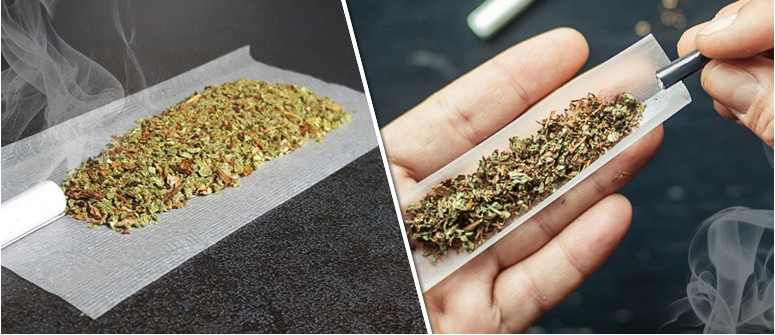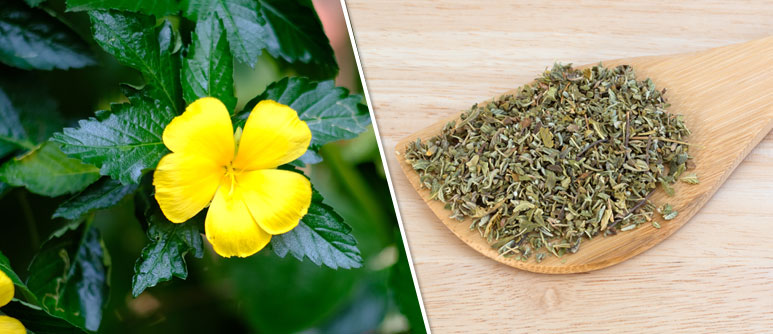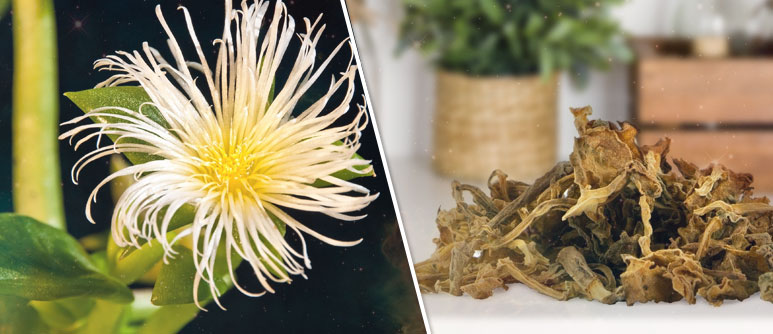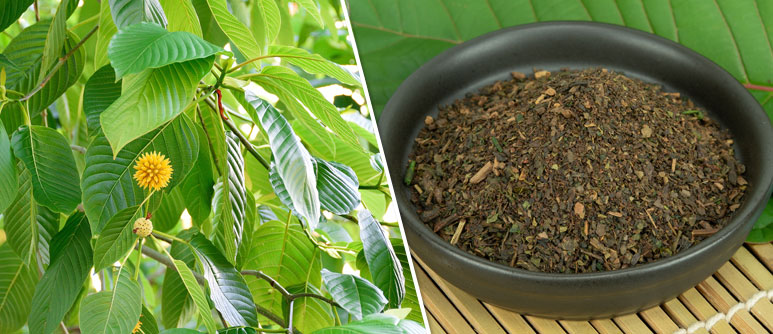Top 10 tobacco alternatives to mix with cannabis

Many cannabis smokers cut their weed with tobacco. However, there are many other herbs that can be substituted instead (that come with fewer health risks). Here are the top 10 herbs to use in your spliffs!
Mixing cannabis with tobacco divides opinion. Some would never think of doing it, while for others, it is a way of life. Yet, for those who love it, there are many alternatives to tobacco out there.
WHY MIX TOBACCO AND CANNABIS IN THE FIRST PLACE?
While spliffs may seem sacrilegious to cannabis purists, there are several reasons people smoke their weed with tobacco. The first is that it stretches your stash out further. Moreover, some believe that weed and tobacco burn better together than weed alone. There is also the stimulation provided by tobacco that makes for a different high that some smokers really enjoy.
Despite these "benefits", smoking tobacco is clearly dangerous to your health. Processed tobacco and cigarettes contain carcinogens and other harmful additives. These in turn can contribute to many kinds of cancer, cardiovascular disease—you name it. Hardly a "health product", in other words.
But, this is no reason to stop smoking spliffs. You can easily substitute tobacco for other herbs!
WHY MIX YOUR WEED WITH OTHER HERBS?
There are plenty of other natural herbs that can add their own benefits when mixed with cannabis. Here is the extra benefit: These are also good companion plants to grow alongside your cannabis crop. Companion planting can help protect your outdoor grow from various hazards, including pests and passersby.
TOP 10 TOBACCO ALTERNATIVES FOR JOINTS
Here is our list of the top 10 herbs to mix with your cannabis. Experiment! Most of these herbs are easy to find, even if you decide not to grow them yourself.
1. DAMIANA

Damiana, known by its scientific name Turnera diffusa, is a brightly coloured flowering plant. A member of the Passifloraceae family, the species is native to southern Texas, Central and South America, and the Caribbean.
HISTORY
Damiana has long been used as a natural aphrodisiac. In Mexico, it was traditionally added to a drink known for its "love-enhancing" qualities. But its history is even more ancient than this. The Maya supposedly used the herb for a range of holistic purposes.
EFFECTS
Consumption of damiana induces a mildly euphoric high that accents cannabis perfectly. In fact, it may even help mitigate some of the side effects of THC, such as paranoia and the jitters. The herb also seems to have a mild thermogenic effect, increasing metabolism. For that reason, damiana is sometimes used to suppress appetite (not to mention the munchies many recreational users get).
2. WILD DAGGA
A species in the mint family, wild dagga (Leonotis leonurus) is a shrub native to Southern Africa. Also known as lion’s tail, wild dagga produces mild psychoactive effects somewhat similar to cannabis.
HISTORY
Traditionally, the Hottentot and Khoikhoi peoples of South Africa smoked wild dagga for its relaxing and euphoric properties. Moreover, the leaves, roots, and bark of the herb are used for snakebites, bee and scorpion stings, and as an infusion for conditions of the blood.
EFFECTS
The main psychoactive component of wild dagga is claimed to be leonurine. However, this chemical compound has never been confirmed in the plant via chemical analysis. Wild dagga is known to contain the component marrubiin, which has both antioxidant and cardioprotective properties. The dried leaves and flowers of wild dagga have a mild relaxing effect when smoked. Some users report a high similar to, but less intense than, THC, making it a great addition to your spliffs.
3. KANNA

Sceletium tortuosum, also known as kanna, is a succulent plant native to Southern Africa. It has a long history of human use. Doses of up to 25mg a day appear to be well-tolerated. That said, it has not been formally studied in humans. However, no treatment-related side effects were observed in an oral toxicity study in rats.
HISTORY
Kanna means "something to chew", which derives from its traditional use among hunter-gatherers. To boost the mood, combat hunger, and stay alert, people would chew on the leaves and swallow the saliva. Kanna is still used widely today, although typically in extract form.
EFFECTS
Kanna is most often invoked as an energy-booster. It can be found in a variety of nutritional additives, as well as teas and tinctures. Smoking kanna boosts the mood and decreases tension. In larger doses, kanna produces a mild, stimulating euphoria that can take your sativa strain to the next level!
4. LAVENDER
Lavender has traditionally been used by itself, in teas, oils, beverages, and cosmetics for a range of purposes. The pungent plant is a common garden herb known for its delicious aroma. Known formally as Lavandula, it is a genus of the mint family containing around 50 species. Lavender is native to Europe, Africa, and Asia.
HISTORY
Humans have used Lavandula angustifolia (English lavender) since Biblical times. Mentioned in the Hebrew Song of Solomon, it was named after the Syrian city of Naarda. It has been used in religious rituals as well as cooking for centuries. It is also commonly grown as an ornamental plant and features heavily in aromatherapy.
EFFECTS
While no formal studies have provided conclusive answers on lavender’s effects, there are dozens of preclinical studies on the potential of lavender to improve mental well-being. Lavender may help promote relaxation, a restful night’s sleep, and healthy digestion. Regardless, its heady perfume leads to a satisfyingly aromatic smoke.
5. ROSEMARY
.jpg)
Rosmarinus officinalis is a perennial herb native to the Mediterranean. The plant is a member of the mint family. To enjoy the effects of rosemary, users can add the herb to their smoke mix or brew it into a refreshing tea.
HISTORY
Rosemary has long been used in cooking and for holistic purposes. Its aromatic, needle-like leaves and flowers can be white, pink, purple, or blue. Use of rosemary dates back to at least 500 BCE in ancient Greece and Rome, and has been popular ever since.
EFFECTS
Rosemary contains a host of antimicrobial, antibacterial, and anti-inflammatory compounds. In Europe, rosemary has long been used to help improve memory. Essential oils derived from the plant are an excellent brain and nerve tonic, and students use the plant to support cognition. When smoked, rosemary’s most notable feature is its fresh, foresty aroma.
6. SAGE
Salvia officinalis, or common sage, is another herb often smoked alongside cannabis. The plant is also commonly used in cooking, which hints at its sensual aroma and flavour. There are many species of the plant, but white sage is one of the most sought-after.
HISTORY
Beyond cooking, sage has long been smoked for its holistic properties and for ceremonial purposes. Native Americans burn sage in a cleansing ritual known as smudging. Both the ancient Egyptians and Romans also used sage for therapeutic and culinary purposes.
EFFECTS
Sage contains the molecules thuone, camphor, and cineole, which have antioxidant and antimicrobial properties. Research also seems to indicate that sage may improve cognition. Sage is a common addition to smoking blends as it imparts very mild effects alongside a pleasant aroma. Mix your favourite indica with sage to stretch your stash.
7. KRATOM

Kratom, Mitragyna speciosa, is a member of the coffee family. Native to Southeast Asia, the tree produces leaves containing over 20 bioavailable alkaloids that bind to opioid receptors. As a result, light consumption of the plant has a mild stimulating effect. Higher doses create a relaxing and sleepy effect.
HISTORY
Kratom has been used in traditional Southeast Asian culture for hundreds of years for a genuinely vast array of purposes. Indeed, it is still enjoyed in various countries in a similar way to tea or coffee. Originally described in Western literature in 1839 by Dutch colonial botanist Pieter Korthals, kratom is a controlled substance in 16 countries.
EFFECTS
The kratom high kicks in about 15–20 minutes after ingestion and lasts for several hours. While mitragynine was thought to be the dominant alkaloid in kratom, researchers are also looking at other possibilities, including 7-hydroxymitragynine. This alkaloid acts on mu opioid receptors (just as nicotine, alcohol, and morphine do) and kappa opioid receptors (like salvia does). When enjoyed alongside cannabis, the effects of kratom can either support stimulation or relaxation, depending on the dose.
8. SALVIA DIVINORUM
Salvia divinorum (aka sage of the diviners) is a plant with psychoactive properties when smoked or chewed. Its native habitat is the isolated Sierra Mazateca of Oaxaca in Mexico. The plant grows up to a metre high.
HISTORY
Salvia has a deep-rooted history in shamanic ceremonies. The plant was first mentioned in print in 1939 by French botanist Jean Basset Johnson who studied Mazatec shamanism. Salvia’s psychoactive mechanism was identified in the 1990s. Because of its strong impact on people, the plant is illegal in some countries.
EFFECTS
Salvia's leaves contain opioid-like compounds that can produce strong hallucinations. These are rapid in onset and short-lived. At lower doses, the plant acts as a diuretic, and was traditionally used to support digestion. As part of a smoke blend, salvia ups the psychedelic potential of your spliff.
9. HOPS
Hops are the flowers of the climbing perennial plant Humulus lupulus. Native to the United Kingdom and other parts of Europe, this member of the Cannabaceae family, along with cannabis and stinging nettle, is today widely grown all over the world.
HISTORY
Used commercially in brewing beer (to add flavour), hops actually have a similar terpene profile to many cannabis strains. The first documented hop cultivation dates back to 736 AD in Germany. Indeed, Germany is still the largest cultivator of the plant.
EFFECTS
Apart from their intense taste, hops have long been used for holistic purposes. The flowers are high in the terpene myrcene, which produces a relaxing and sleepy effect. Adding dried hops to a spliff creates an extra-relaxing effect that enhances the cannabis body high.
10. MULLEIN LEAVES
Verbascum thapsus is a species native to Europe, North Africa, and Asia. It is also found in the Americas and Australia. It has a mild flavour and only produces a little bit of smoke. There are over 200 species of the plant.
HISTORY
Mullein has been used in traditional therapeutic practices since the time of the ancient Romans. It was recommended for lung issues by the Greek physician and botanist Dioscorides, and herbalists still use the plant for a range of respiratory issues.
EFFECTS
Mullein oil is commonly extracted from the flower and leaves of the plant. Largely used for its comforting properties, mullein is also an expectorant, loosening up mucus. Used in your smoke blend, it imparts a soothing feeling on the lungs that allows you to smoke longer and more enjoyably.
WHAT IS THE BEST TOBACCO ALTERNATIVE TO MIX WITH CANNABIS?
Depending on what kind of effect you seek, cannabis aficionados looking for a tobacco alternative have many choices. Just like there is no "best" cannabis strain for all consumers, these herbs will appeal to different kinds of smokers. Regardless, whether used as a recreational additive or holistic adjunct, there are many great alternatives to rolling a spliff with tobacco.
.jpg)
.jpg)

.jpg)
